Code
HCS21788
Weight
800 gm / 1.76 lbs
Size
Height
20cm (8") Material
Conch shell
Availability
Available
Date Added
2020-10-27 06:27:59
Note : We used to sell this product 5 years ago so it may no longer be in our stock.
It is possible that we still have it with our suppliers but the price could be different from before.
Feel free to order. We will verify availability and inform you promptly.
It is possible that we still have it with our suppliers but the price could be different from before.
Feel free to order. We will verify availability and inform you promptly.

Safe Payment
We accept Paypal, Money Transfer, Bank Transfer
Confidence
Protection covers your purchase and personal data.
Worldwide Delivery
We ship Worldwide, except Russia.Shipping cost US$25.2 for upto 0.5 kgs

Hotline
Talk to help line for your question on 9841267335Shakti : Introduction
Shakti Yab-yum is a common symbol in Nepalese and Tibetan art. It represents the primordial union of wisdom and compassion, depicted as a male deity in union with his female consort via the similar concept of interpenetration or "coalescence," as illustrated by the concept of Indra's net. The male figure represents compassion and dexterity, while the female figure represents insight. The female is seated on the male's lap in yab-yum. A rare rendition of a similar figure, but reversed, with the male sitting on the female's lap, is known as yum-yab. Read More . . .
Shakti Yab-yum is a common symbol in Nepalese and Tibetan art. It represents the primordial union of wisdom and compassion, depicted as a male deity in union with his female consort via the similar concept of interpenetration or "coalescence," as illustrated by the concept of Indra's net. The male figure represents compassion and dexterity, while the female figure represents insight. The female is seated on the male's lap in yab-yum. A rare rendition of a similar figure, but reversed, with the male sitting on the female's lap, is known as yum-yab. Read More . . .
Yellow Jambhala : Brief Introduction
Jambhala (also known as Dzambhala, Dzambala, Zambala, or Jambala) is the God of Wealth and appropriately a member of the Jewel Family (see Ratnasambhava). He is sometimes equated with the Hindu deity Kubera. Jambhala is also believed to be an emanation of Avalokitesvara or Chenrezig, the Bodhisattva of Compassion. There are five different wealth Jambhalas; each has its own practice and mantra to help eliminate poverty and create financial stability.
Gyalten Sogdzin Rinpoche said that Jambhala is the protector of all Lineages and of all sentient beings from all sickness and difficulties. Jambhala is a Bodhisattva of material and spiritual wealth as well as many other things, especially of granting financial stability.
Because in this world, there are all kinds of wrathful and negative emotions or bad spirits, and sometimes they will harm you and other sentient beings, Dzambhala must take on such a wrathful and powerful form to protect us from these harmful spirits and negative karma. Especially, Dzambhala helps us minimize or decrease all misfortunes and obstacles and helps us increase all good fortune and happiness. Read More . . .
Jambhala (also known as Dzambhala, Dzambala, Zambala, or Jambala) is the God of Wealth and appropriately a member of the Jewel Family (see Ratnasambhava). He is sometimes equated with the Hindu deity Kubera. Jambhala is also believed to be an emanation of Avalokitesvara or Chenrezig, the Bodhisattva of Compassion. There are five different wealth Jambhalas; each has its own practice and mantra to help eliminate poverty and create financial stability.
Gyalten Sogdzin Rinpoche said that Jambhala is the protector of all Lineages and of all sentient beings from all sickness and difficulties. Jambhala is a Bodhisattva of material and spiritual wealth as well as many other things, especially of granting financial stability.
Because in this world, there are all kinds of wrathful and negative emotions or bad spirits, and sometimes they will harm you and other sentient beings, Dzambhala must take on such a wrathful and powerful form to protect us from these harmful spirits and negative karma. Especially, Dzambhala helps us minimize or decrease all misfortunes and obstacles and helps us increase all good fortune and happiness. Read More . . .
Iconographic :
The conch shell, this has been used as the original from the past ancient times, in ancient history of Nepal and India these horns are used to commence is any rituals or worn. Popularly known as Shanka, is a musical instrument blow by the lord Krishna to declare the start of the war of Mahabharata. in all the epic stories of Hinduism shankha has been described being carried by all the heroes of the past.
In Vajrayana Buddhism. :This has been recognised as the symbol of fearlessness, and proclaimed the truth of dharma. This is the one of the eight symbols of good fortune this stands for the popularity and fame of Buddhist teaching which spread in all direction like the sound of the Conch Trumpet.
In addition to Buddha's throat, the conch also appears as an auspicious mark on the soles, palms, limbs, breast or forehead of a divinely endowed being.
The fourfold caste division is also applied as follows:
The smooth white conch represents the Brahmin caste (priests)
The red conch, the kshatriyas (warriors)
The yellow conch, the vaishyas (merchants)
The grey conch, the shudras (labourers)
Additionally, there is a fundamental classification of conch shells occurring in nature: those that turn to the left and those which turn to the right. Shells which spiral to the right in a clockwise direction are a rarity and are considered especially sacred. The right-spiralling movement of such a conch is believed to echo the celestial motion of the sun, moon, planets and stars across the heavens. The hair whorls on Buddha's head spiral to the right, as do his fine body hairs, the long curl between his eyebrows (urna), and also the conch-like swirl of his navel.
The Left Turning Conch The Right Turning Conch :In addition to Buddha's throat, the conch also appears as an auspicious mark on the soles, palms, limbs, breast or forehead of a divinely endowed being.
The fourfold caste division is also applied as follows:
The smooth white conch represents the Brahmin caste (priests)
The red conch, the kshatriyas (warriors)
The yellow conch, the vaishyas (merchants)
The grey conch, the shudras (labourers)
Additionally, there is a fundamental classification of conch shells occurring in nature: those that turn to the left and those which turn to the right. Shells which spiral to the right in a clockwise direction are a rarity and are considered especially sacred. The right-spiralling movement of such a conch is believed to echo the celestial motion of the sun, moon, planets and stars across the heavens. The hair whorls on Buddha's head spiral to the right, as do his fine body hairs, the long curl between his eyebrows (urna), and also the conch-like swirl of his navel.
It is one of the main emblems of Vishnu, and his conch bears the name of Panchajanya, meaning 'having control over the five classes of beings.'
Arjuna's (hero of the Mahabharata) mighty conch was known as Devadatta, whose triumphant blast brought terror to the enemy. As a proclaiming battle horn, the conch is akin to the bugle. It is an emblem of power, authority and sovereignty whose blast is believed to banish evil spirits, avert natural disasters, and scare away poisonous creatures.
Today, in its greatly tamed avatar, the conch is used in Tibetan Buddhism to call together religious assemblies. During the actual practise of rituals, it is used both as a musical instrument and as a container for holy water.
Ancient Indian belief classifies the conch into male and female varieties. The thicker-shelled bulbous one is thought to be the male (purusha), and the thin-shelled slender conch to be the female (shankhini).
Arjuna's (hero of the Mahabharata) mighty conch was known as Devadatta, whose triumphant blast brought terror to the enemy. As a proclaiming battle horn, the conch is akin to the bugle. It is an emblem of power, authority and sovereignty whose blast is believed to banish evil spirits, avert natural disasters, and scare away poisonous creatures.
Today, in its greatly tamed avatar, the conch is used in Tibetan Buddhism to call together religious assemblies. During the actual practise of rituals, it is used both as a musical instrument and as a container for holy water.
Ancient Indian belief classifies the conch into male and female varieties. The thicker-shelled bulbous one is thought to be the male (purusha), and the thin-shelled slender conch to be the female (shankhini).


![Tibetan Conch Shell With Jambhala With Consort, [shakti], Yab-yum [hand Carved]](https://handicraftseller.com/uploads/pics/product/thumb/2020/10/21788.jpg)
![Tibetan Conch Shell With Jambhala With Consort, [shakti], Yab-yum [hand Carved]](https://handicraftseller.com/uploads/pics/product/thumb/2020/10/21788_0.jpg)
![Tibetan Conch Shell With Jambhala With Consort, [shakti], Yab-yum [hand Carved]](https://handicraftseller.com/uploads/pics/product/thumb/2020/10/21788_1.jpg)
![Tibetan Conch Shell With Jambhala With Consort, [shakti], Yab-yum [hand Carved]](https://handicraftseller.com/uploads/pics/product/thumb/2020/10/21788_2.jpg)
![Tibetan Conch Shell With Jambhala With Consort, [shakti], Yab-yum [hand Carved]](https://handicraftseller.com/uploads/pics/product/thumb/2020/10/21788_3.jpg)
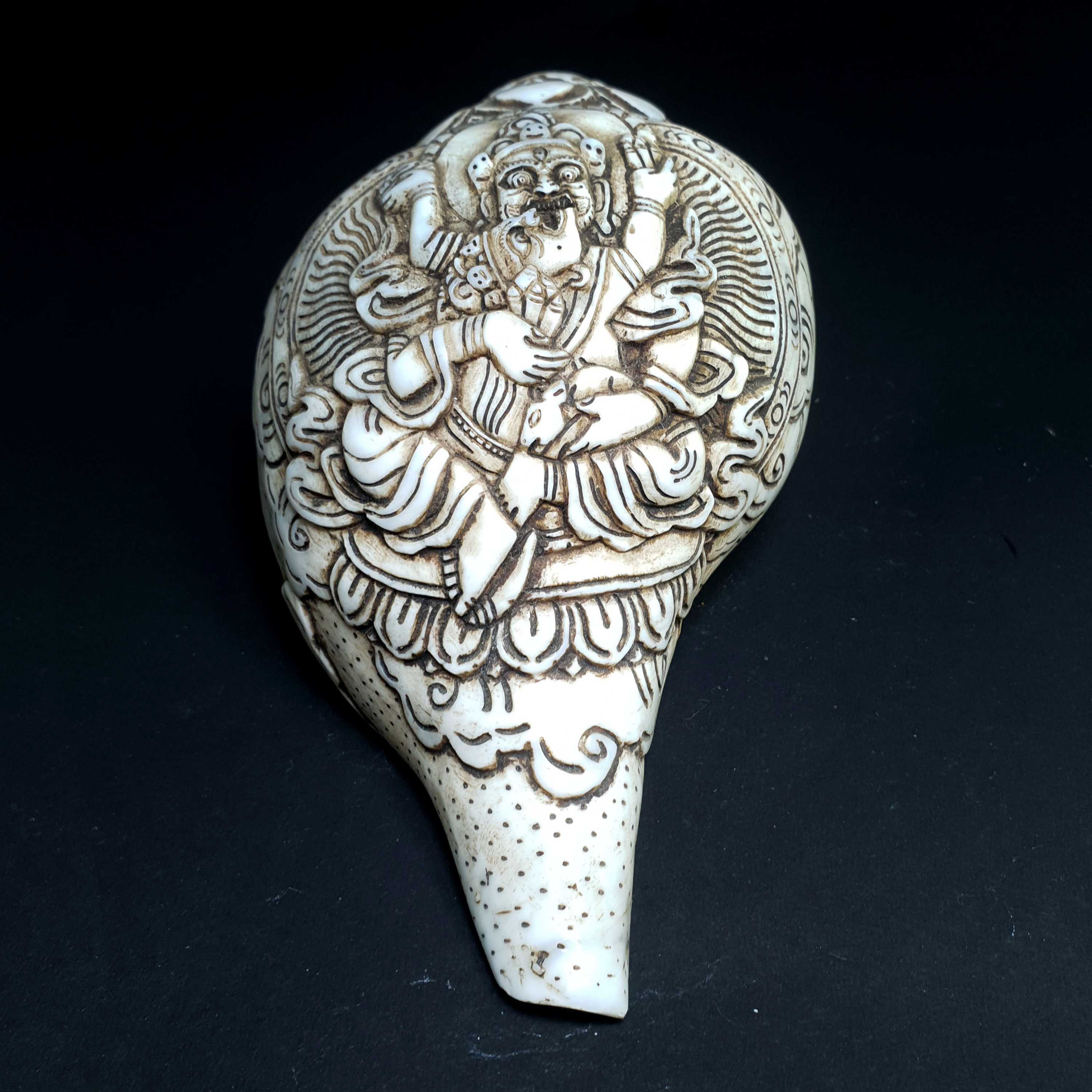
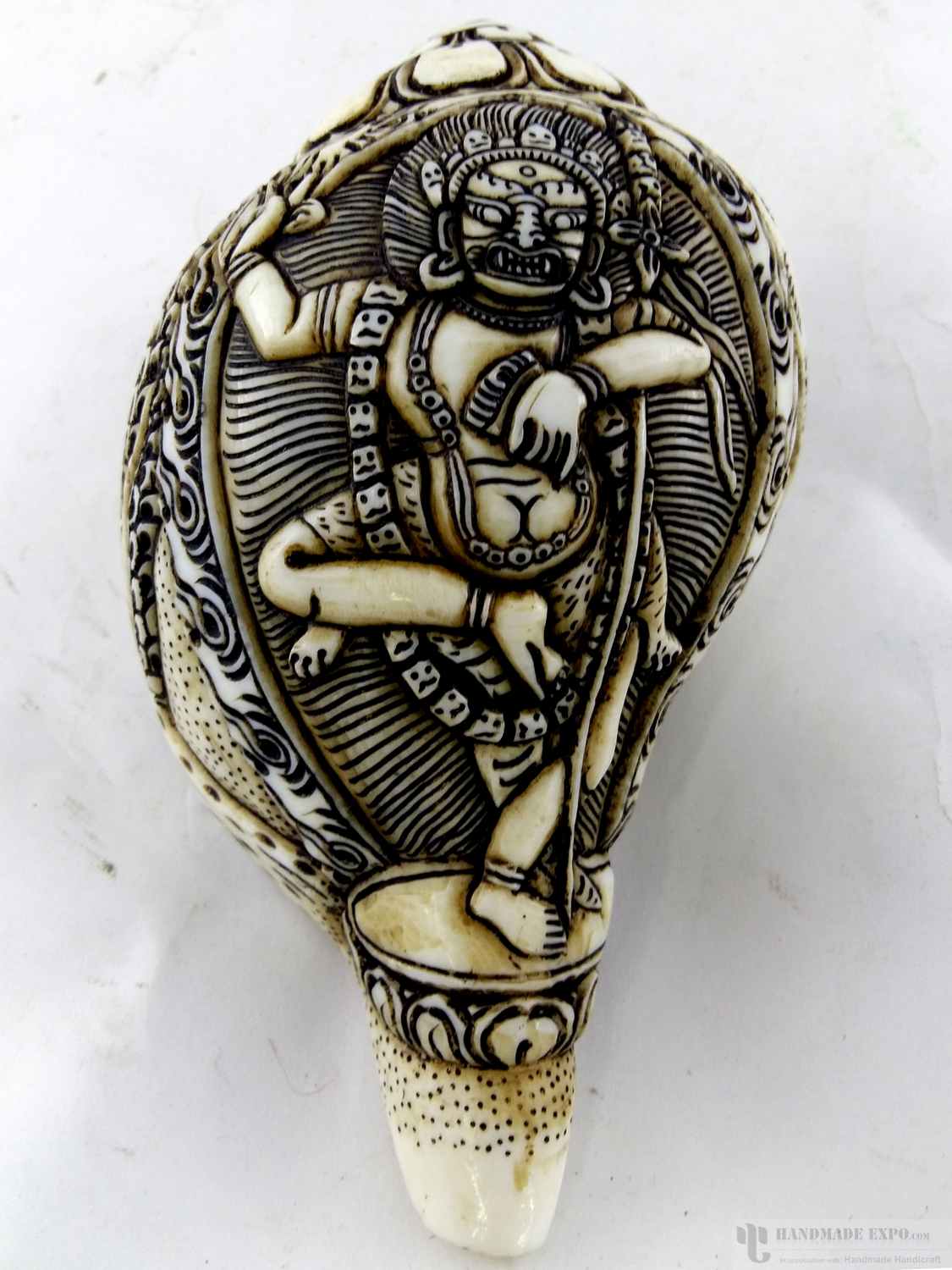 Hand Carved, Conch Shell" title="Vajravarahi - Dorje Phagmo Yogini
Hand Carved, Conch Shell" title="Vajravarahi - Dorje Phagmo Yogini 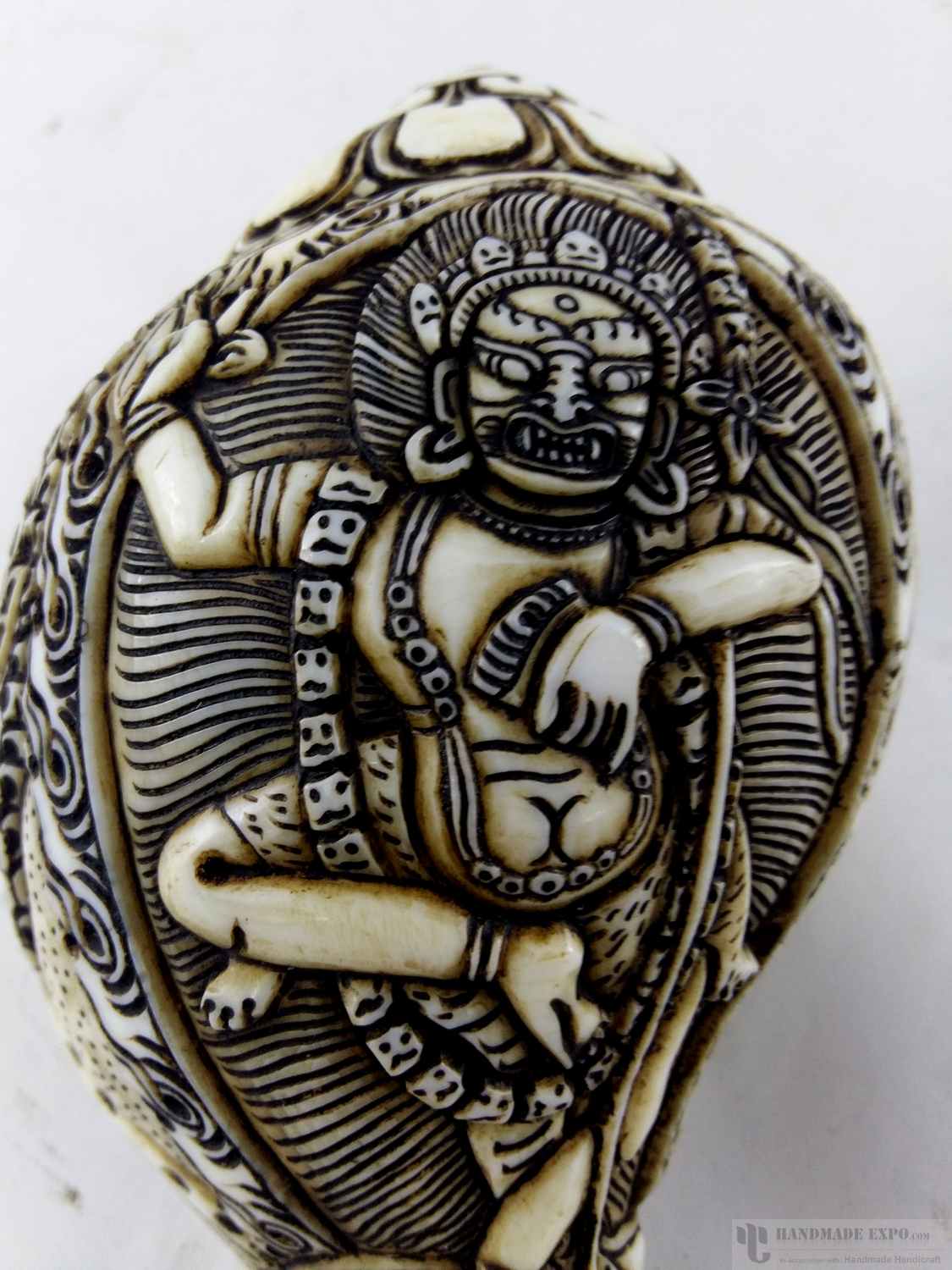 Hand Carved, Conch Shell" title="Vajravarahi - Dorje Phagmo Yogini
Hand Carved, Conch Shell" title="Vajravarahi - Dorje Phagmo Yogini 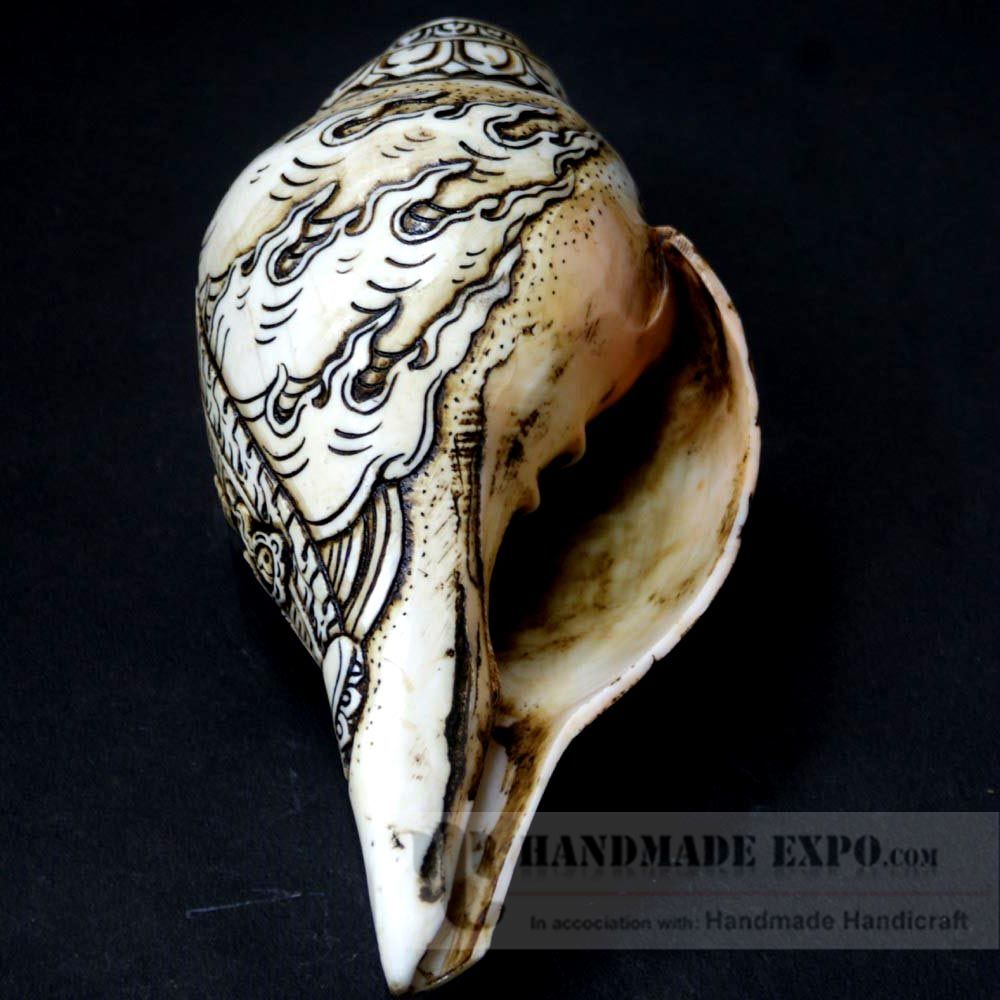
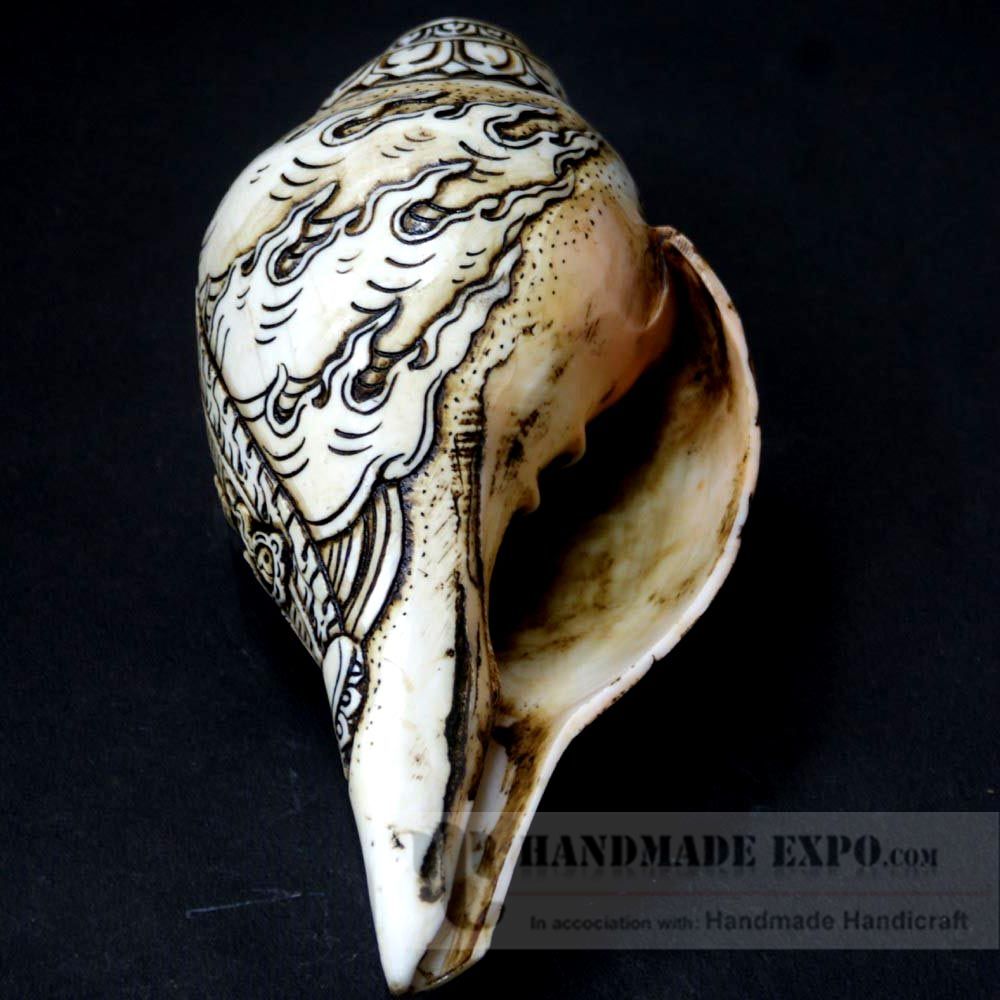
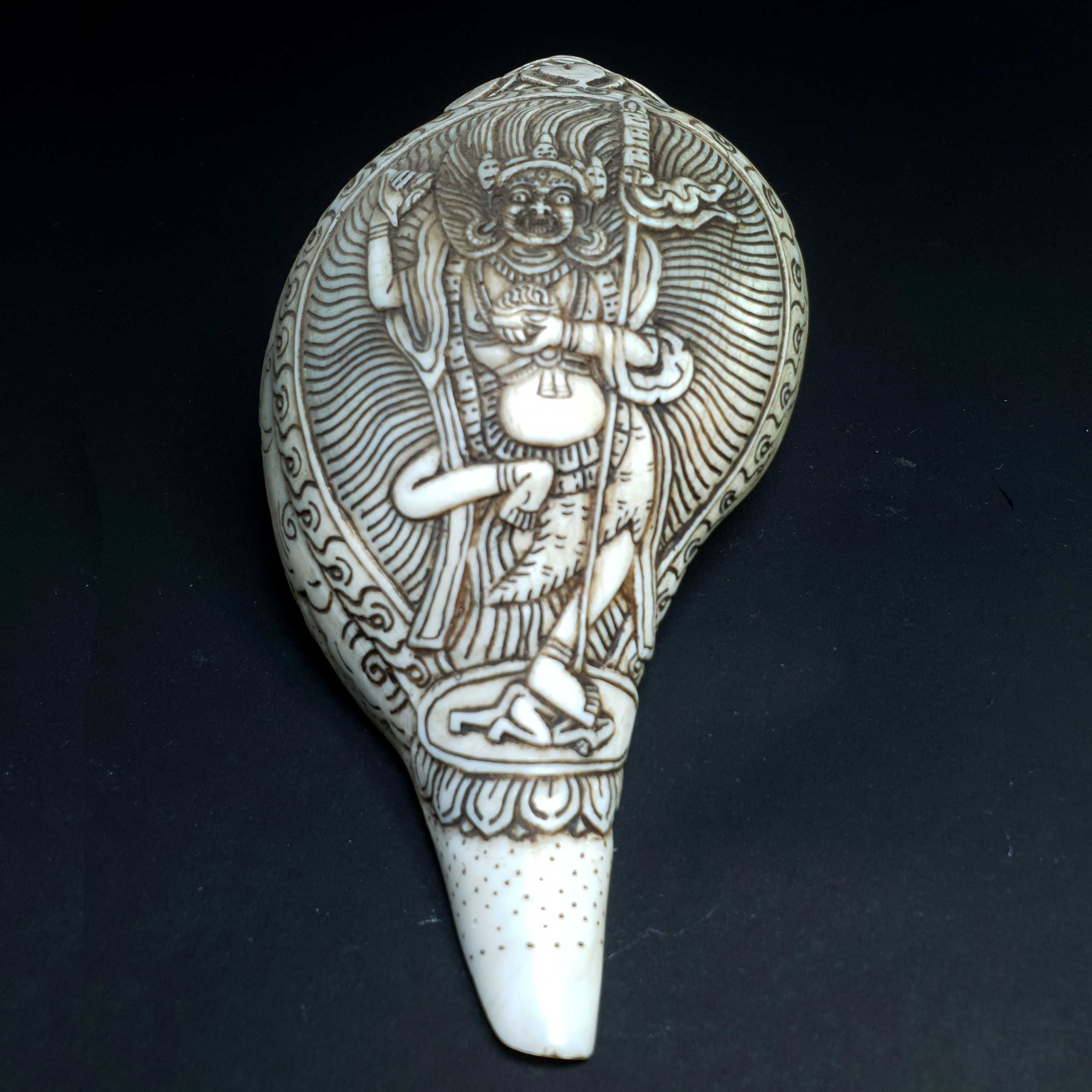 with Vajravarahi - Dorje Phagmo Yogini
with Vajravarahi - Dorje Phagmo Yogini  with Vajravarahi - Dorje Phagmo Yogini
with Vajravarahi - Dorje Phagmo Yogini 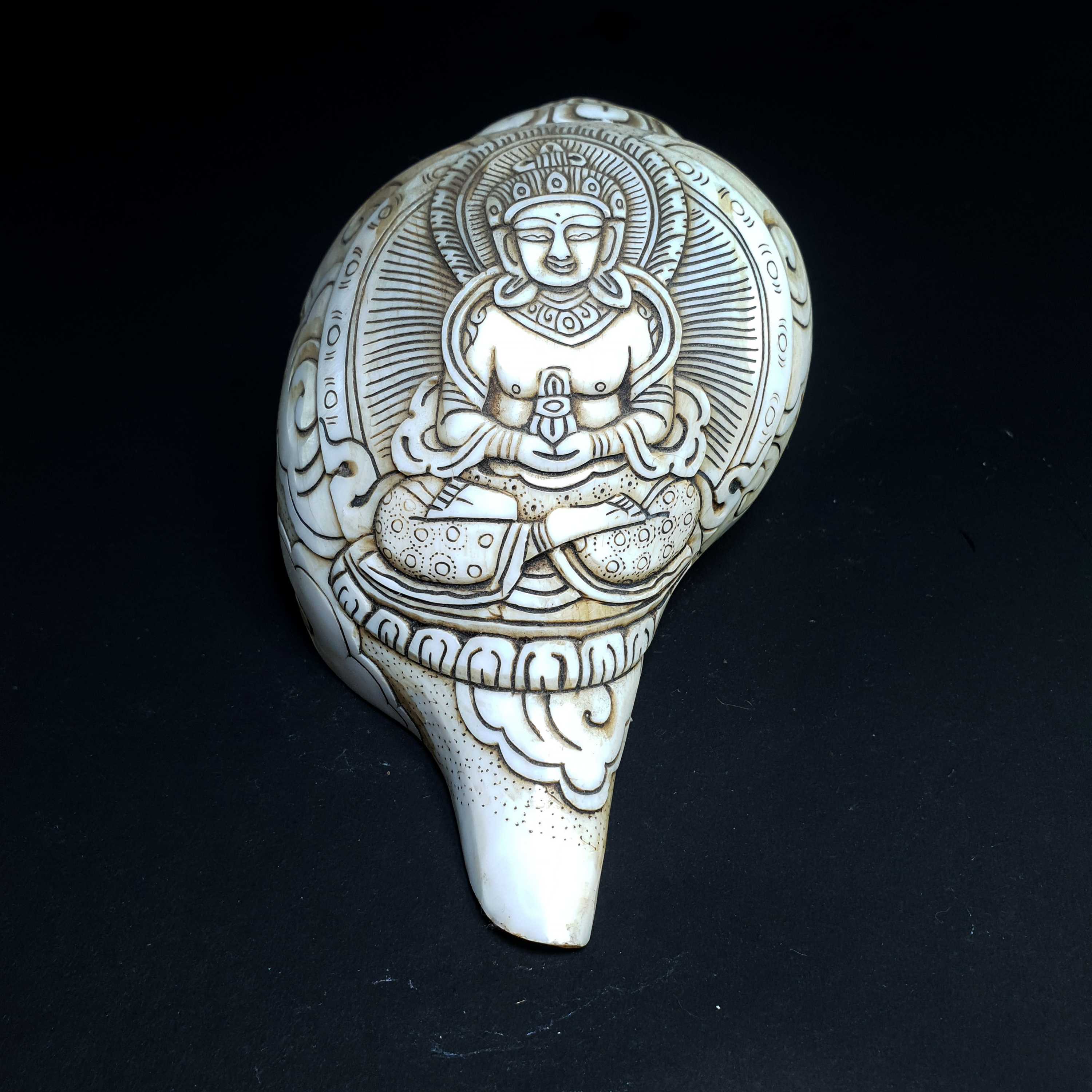 with Aparimita Amitayus
with Aparimita Amitayus 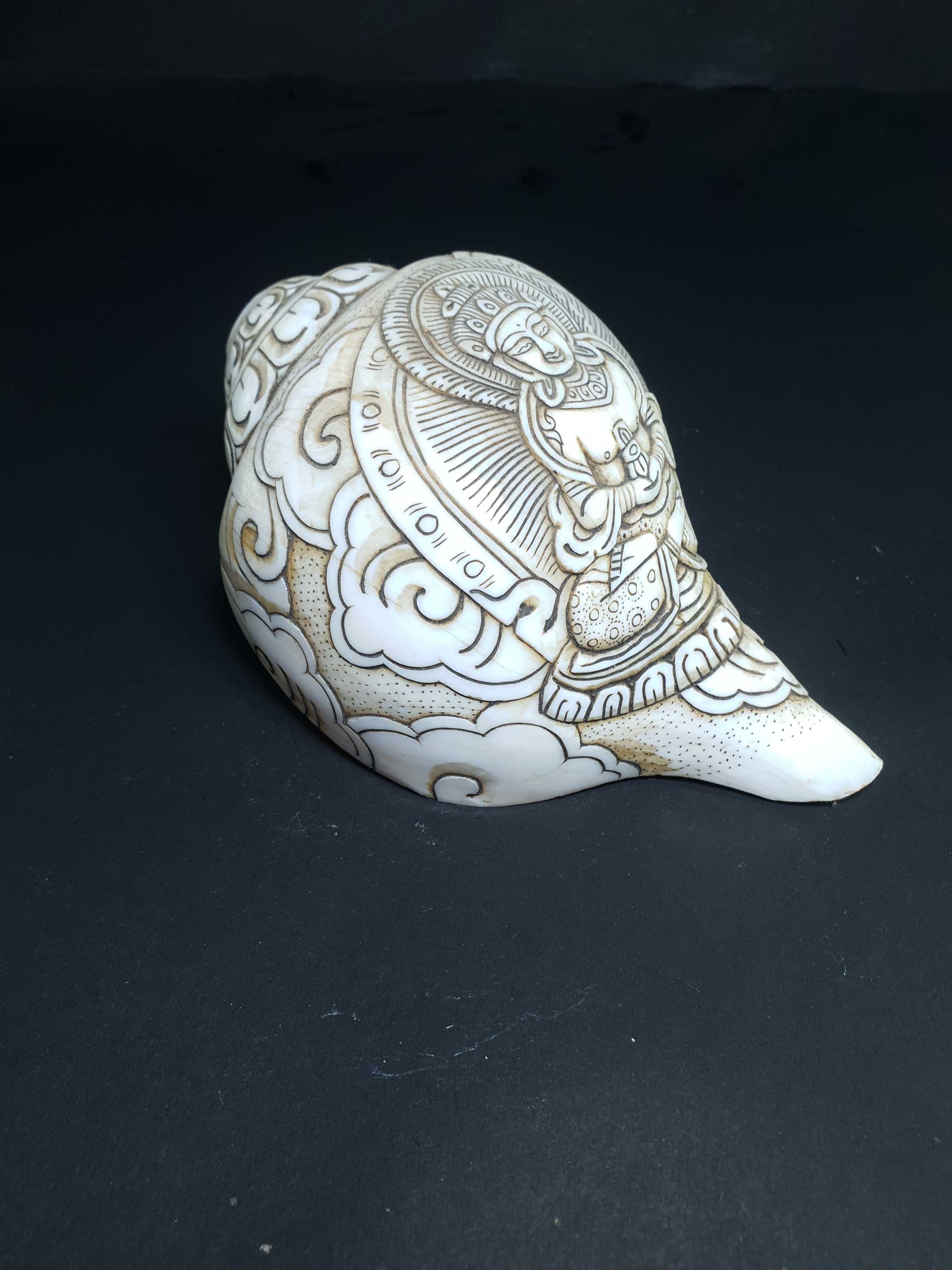 with Aparimita Amitayus
with Aparimita Amitayus 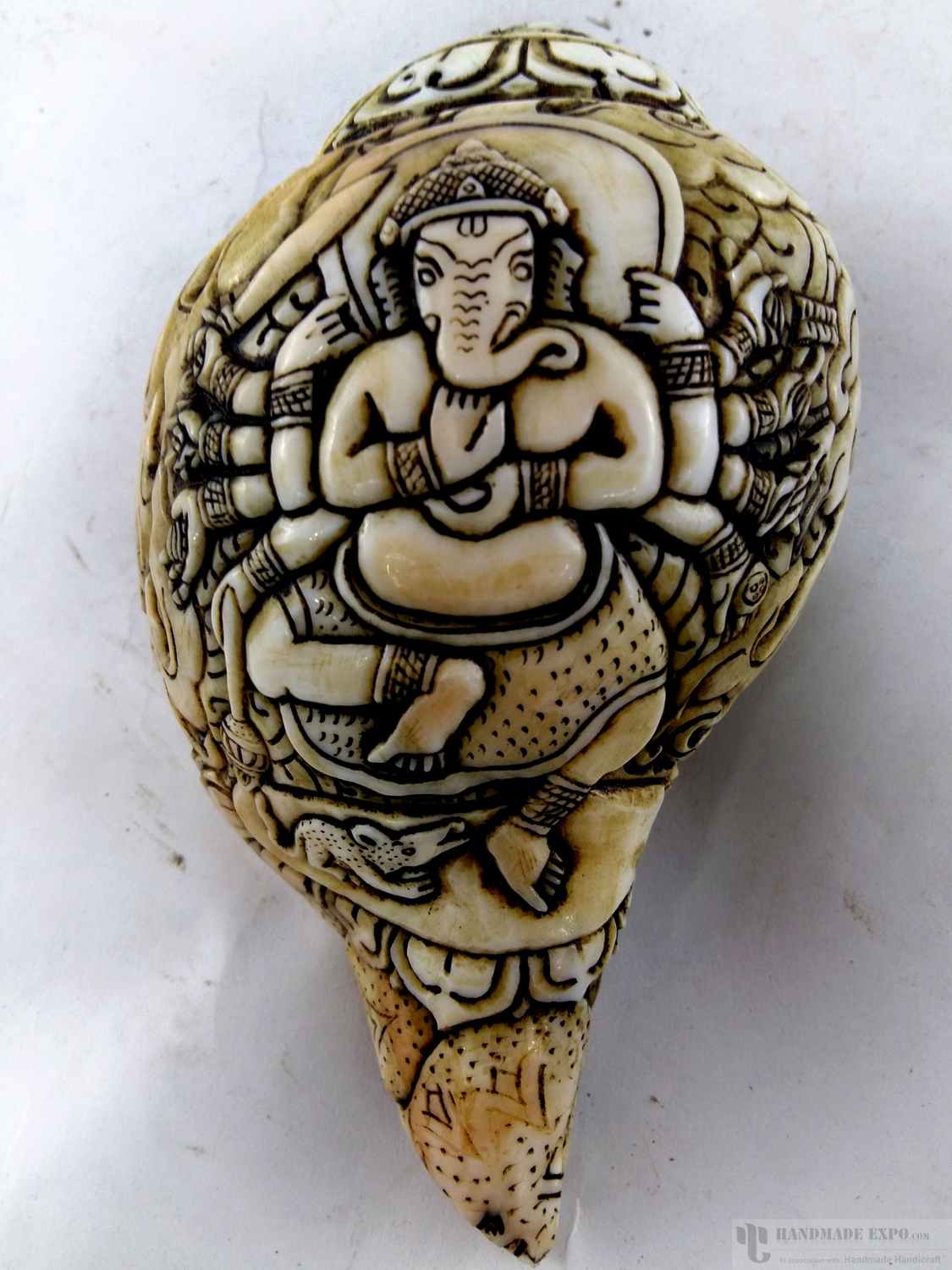 Hand Carved, Conch Shell" title="12 Garms Ganesh
Hand Carved, Conch Shell" title="12 Garms Ganesh 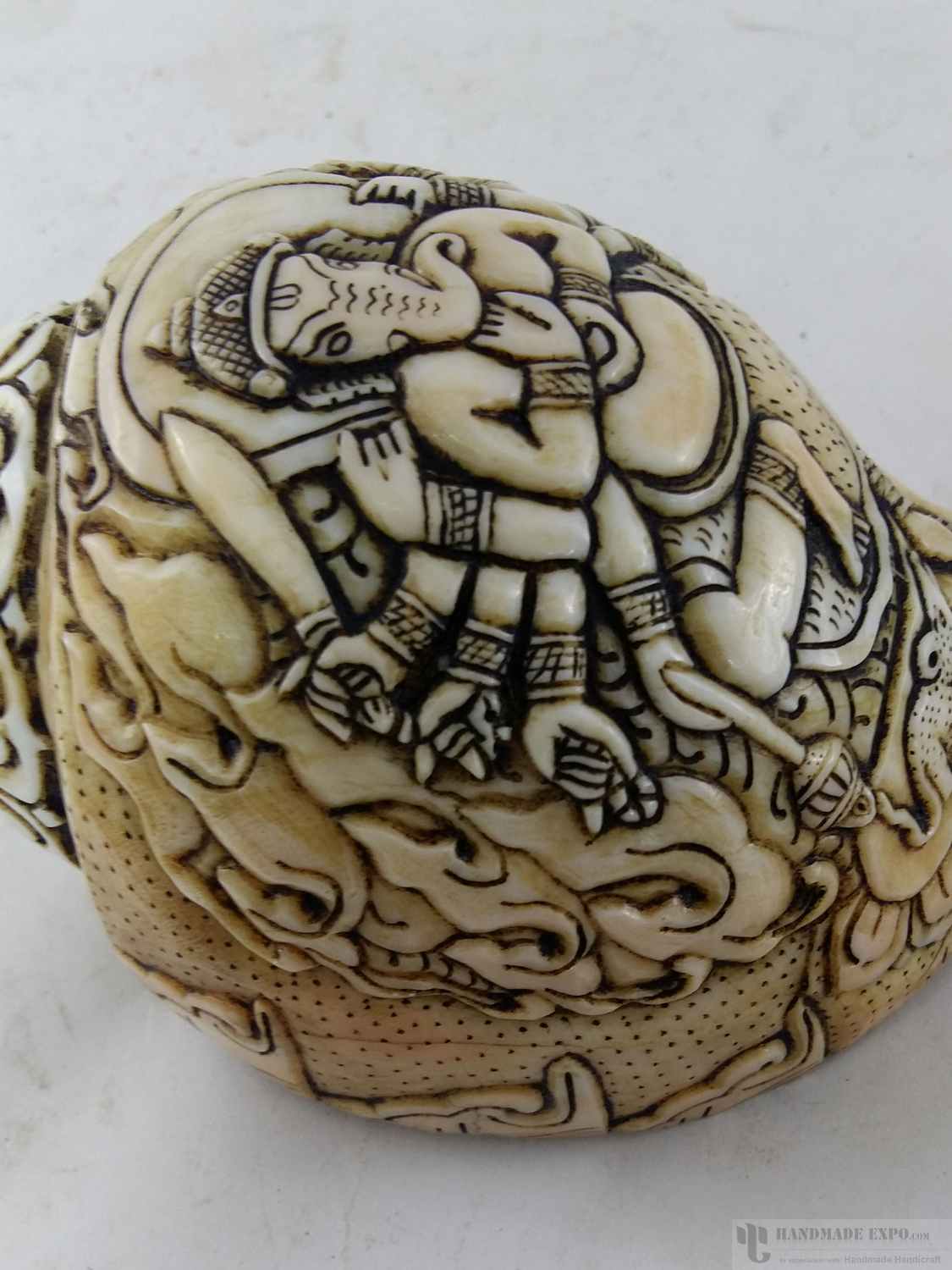 Hand Carved, Conch Shell" title="12 Garms Ganesh
Hand Carved, Conch Shell" title="12 Garms Ganesh 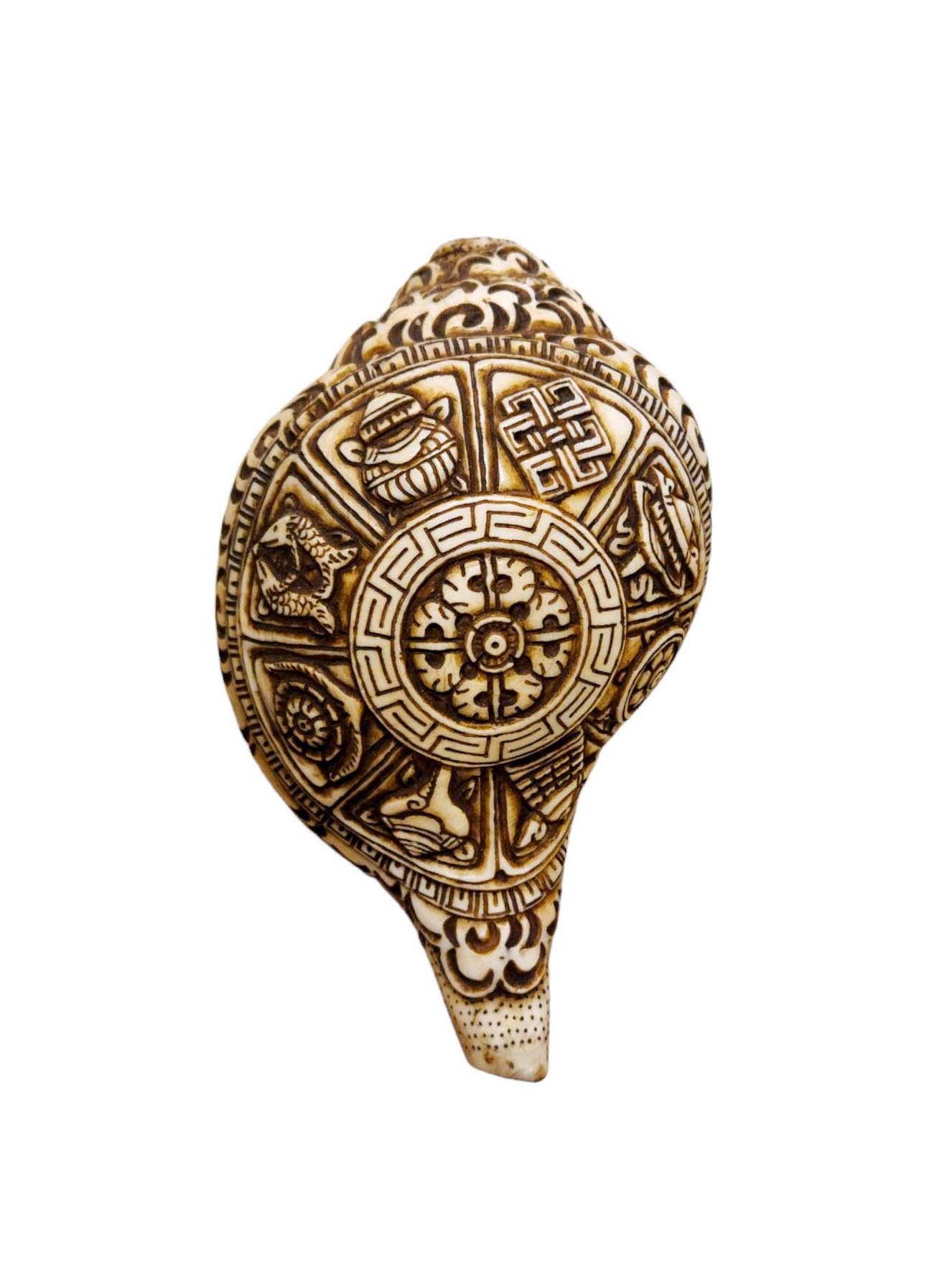 with
with 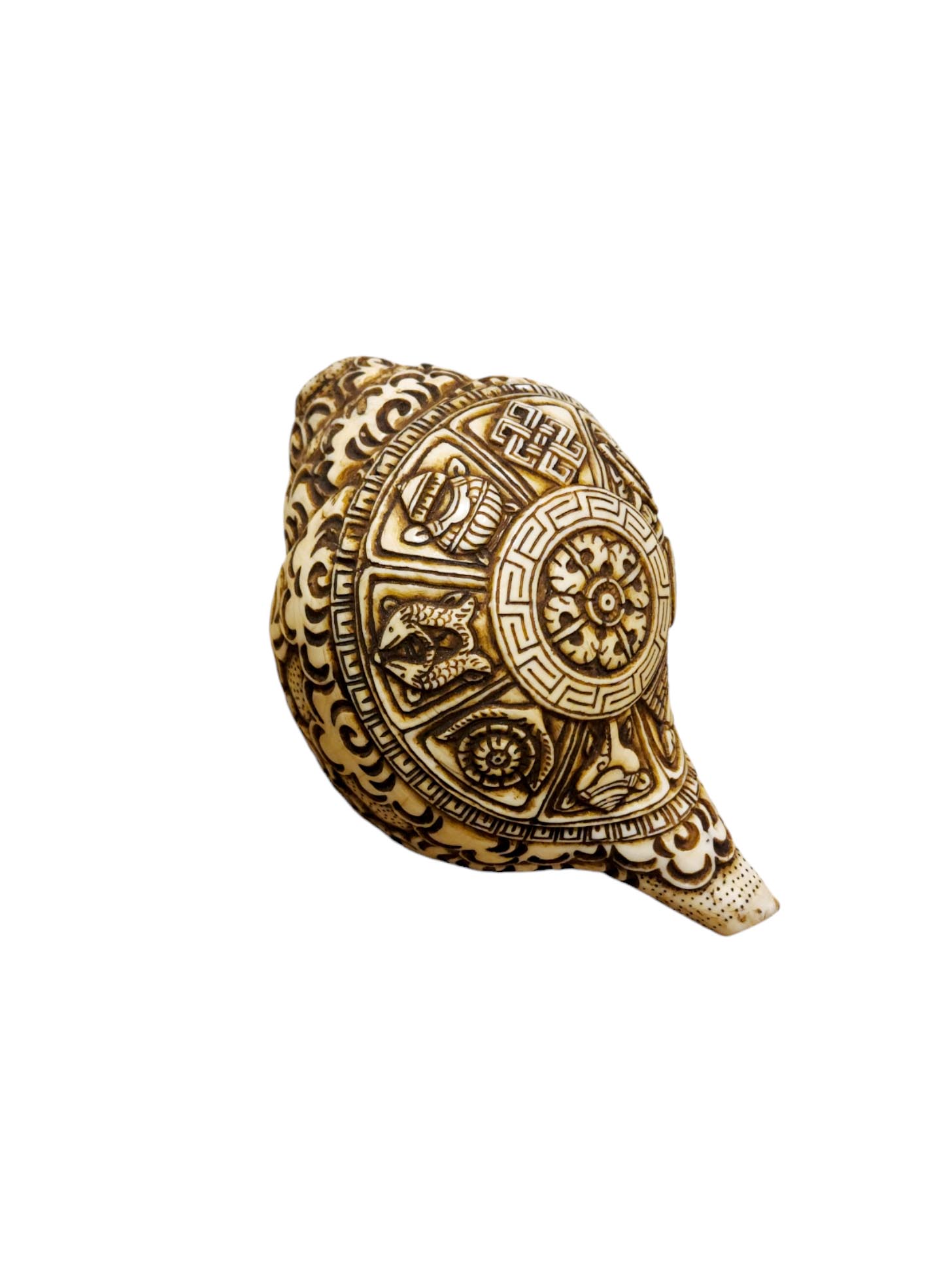 with
with 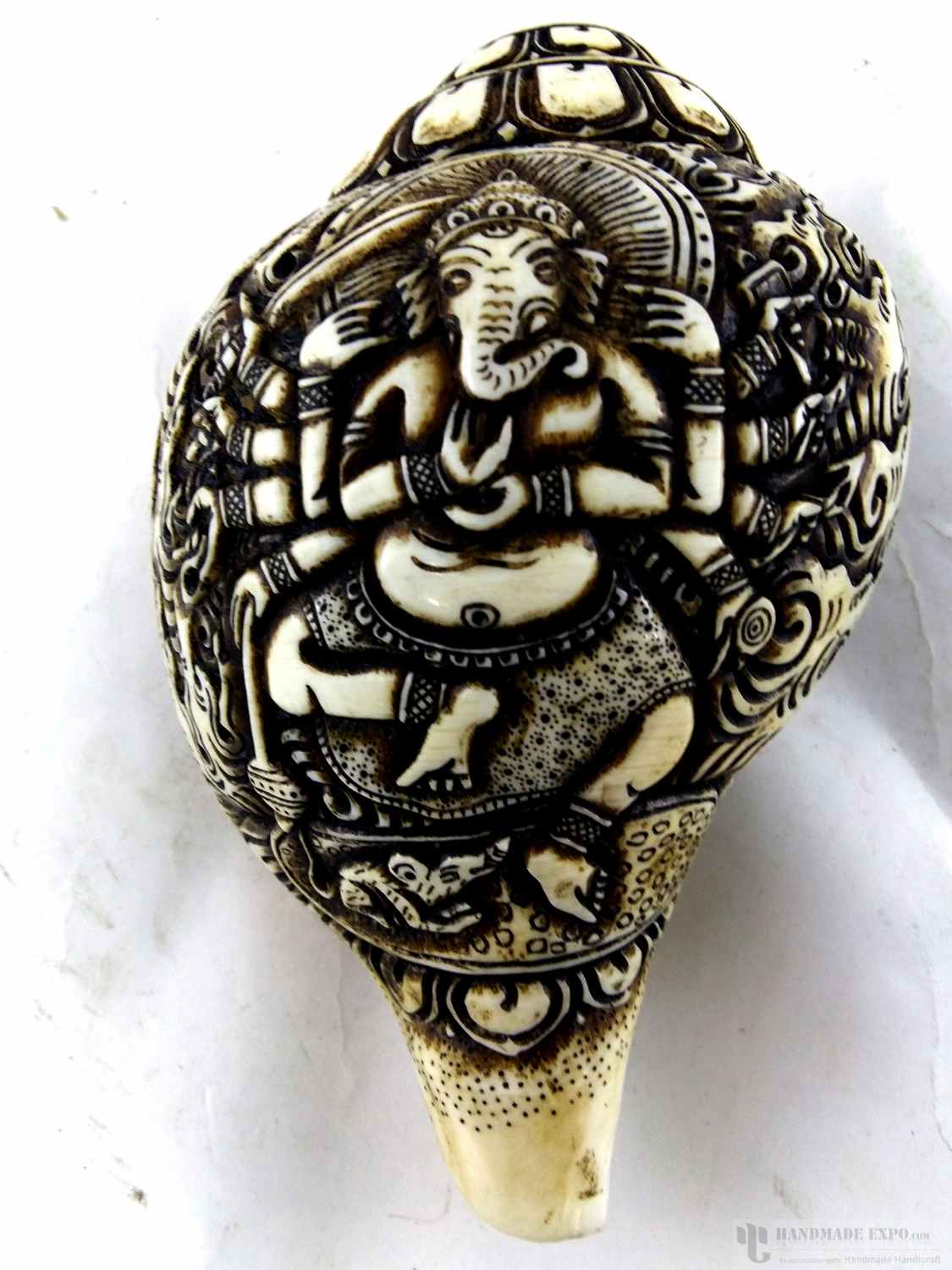 Hand Carved, Conch Shell" title="12 Arms Ganesh
Hand Carved, Conch Shell" title="12 Arms Ganesh  Hand Carved, Conch Shell" title="12 Arms Ganesh
Hand Carved, Conch Shell" title="12 Arms Ganesh 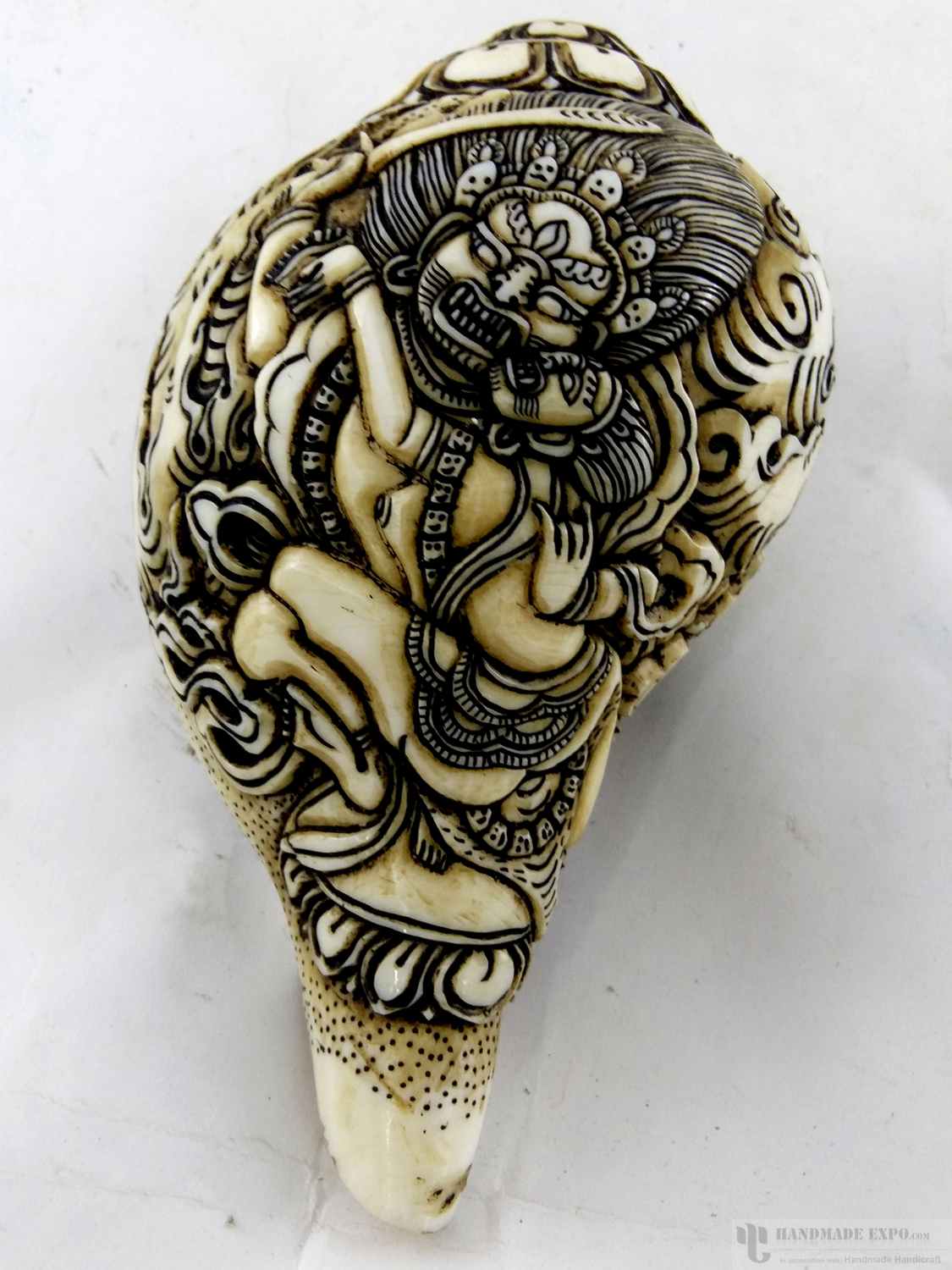 with Consort,
with Consort, 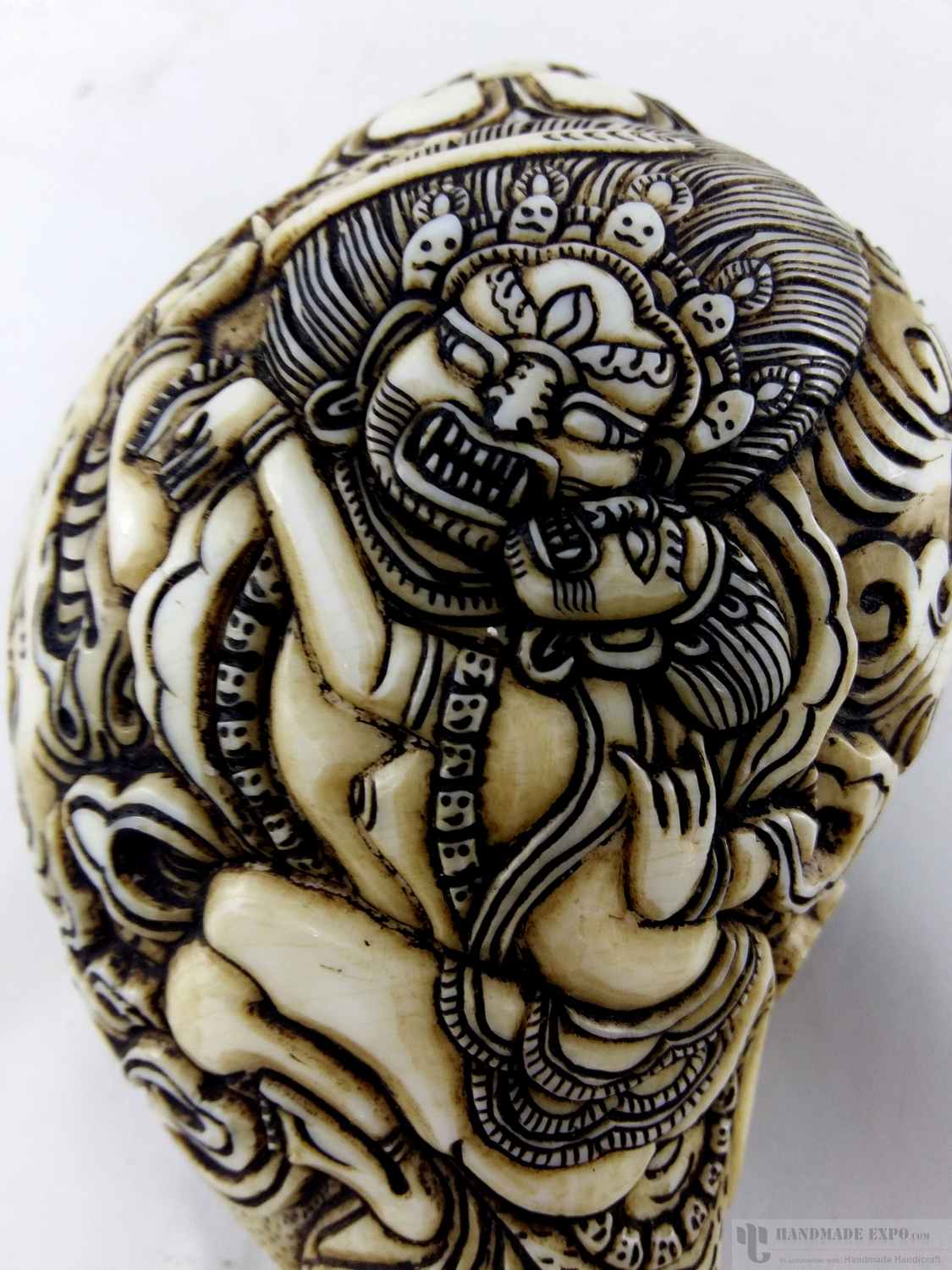 with Consort,
with Consort, 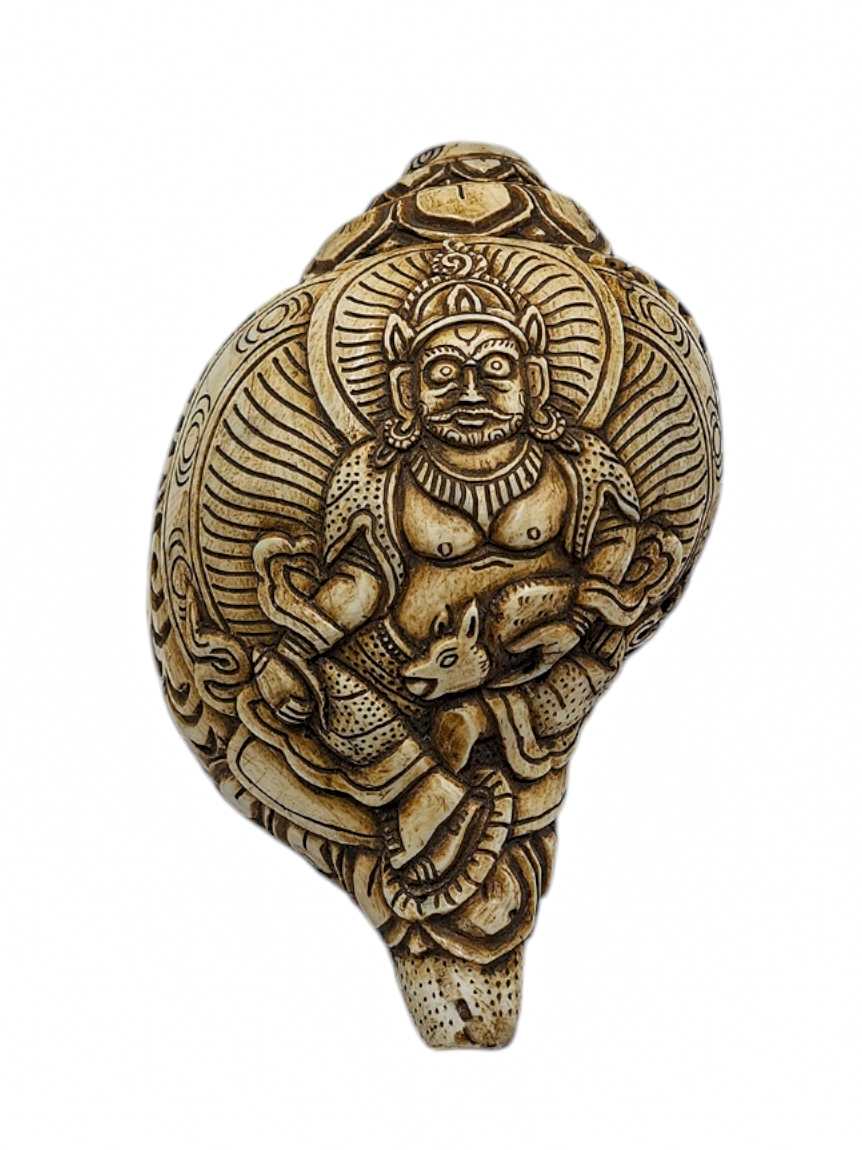 with
with 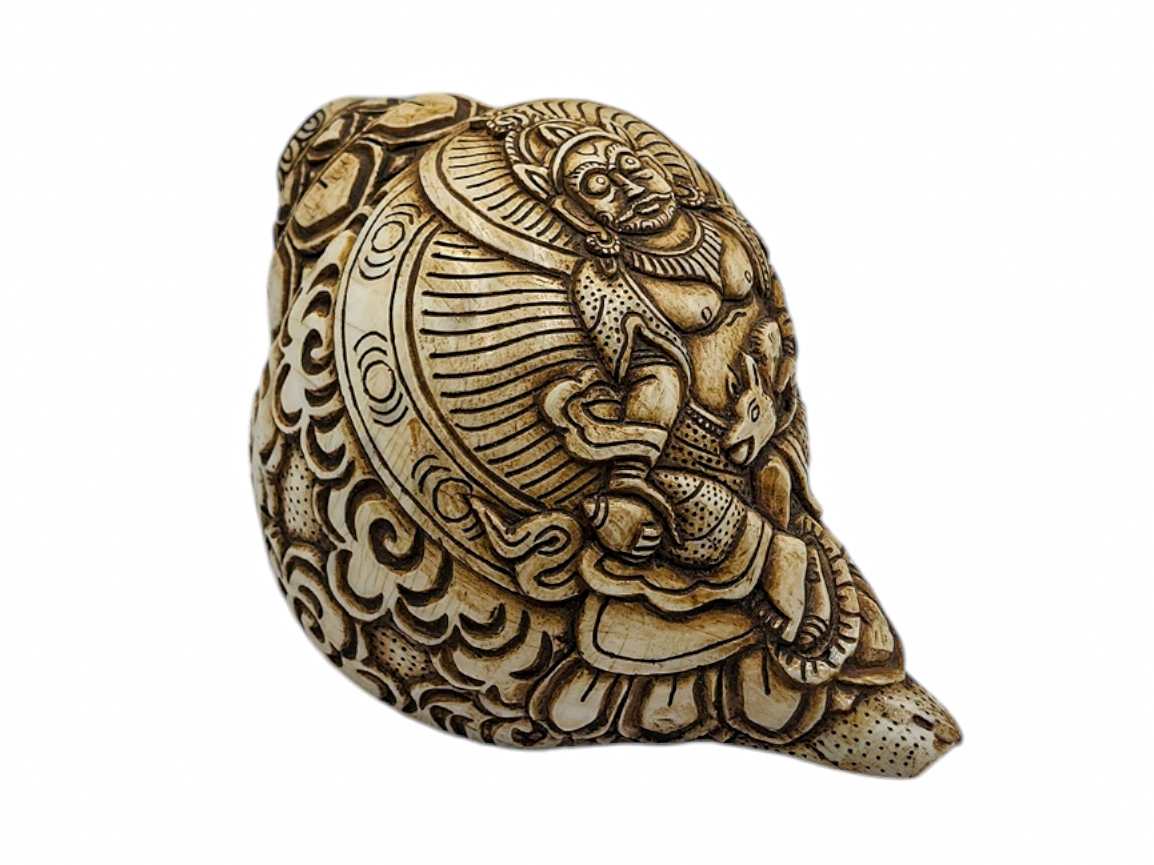 with
with  with
with 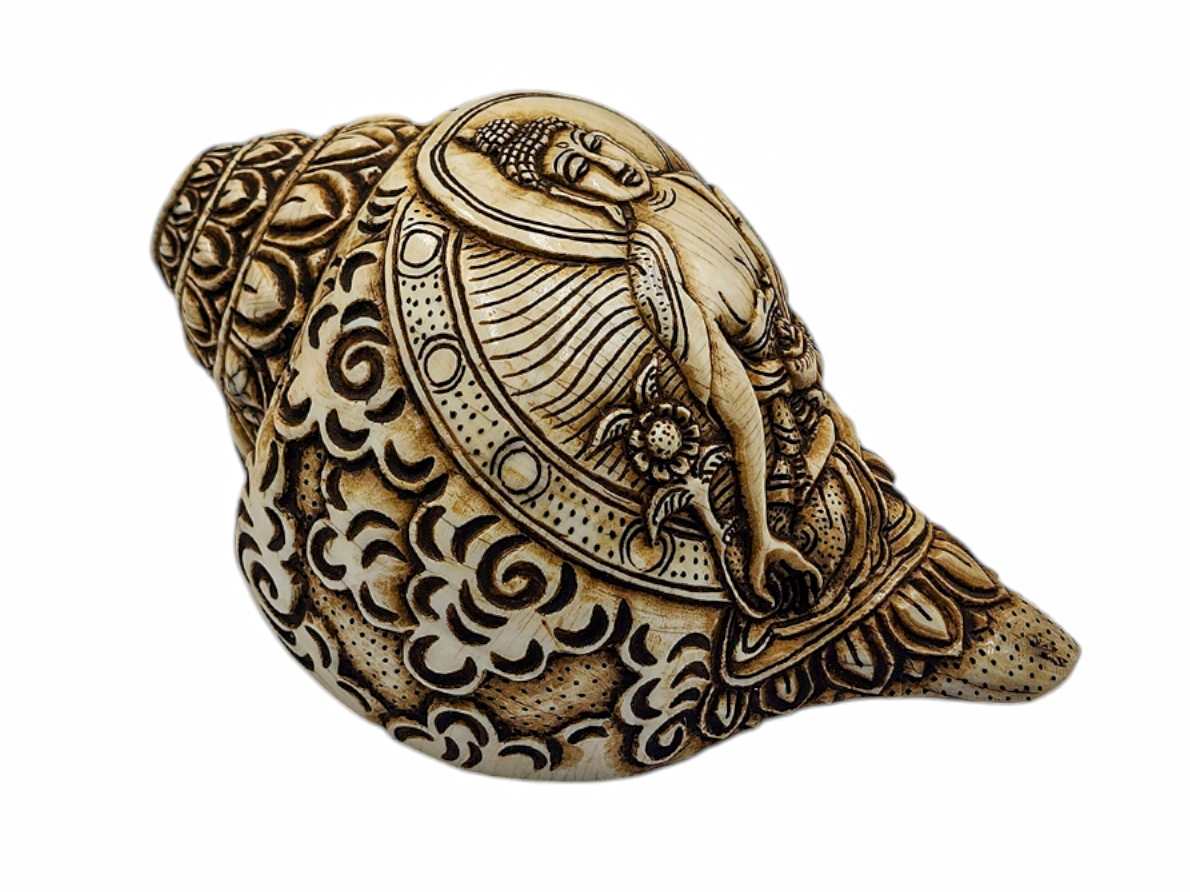 with
with